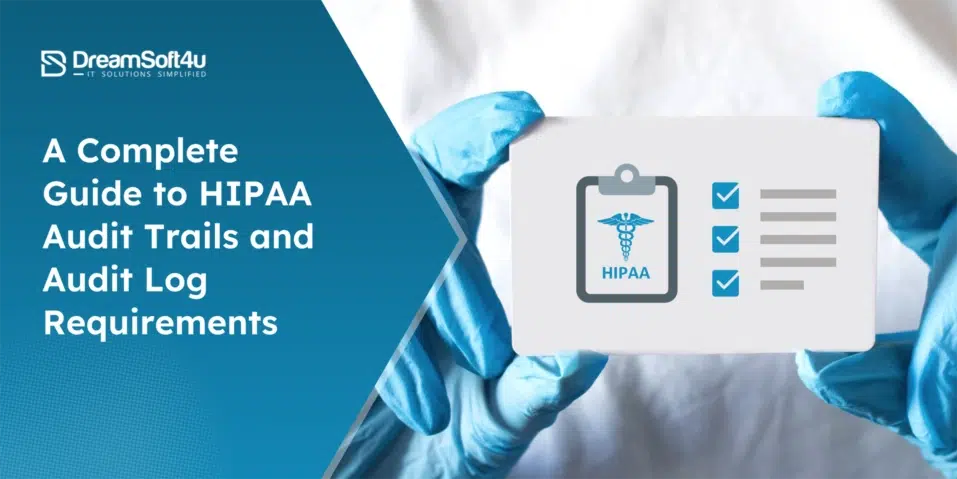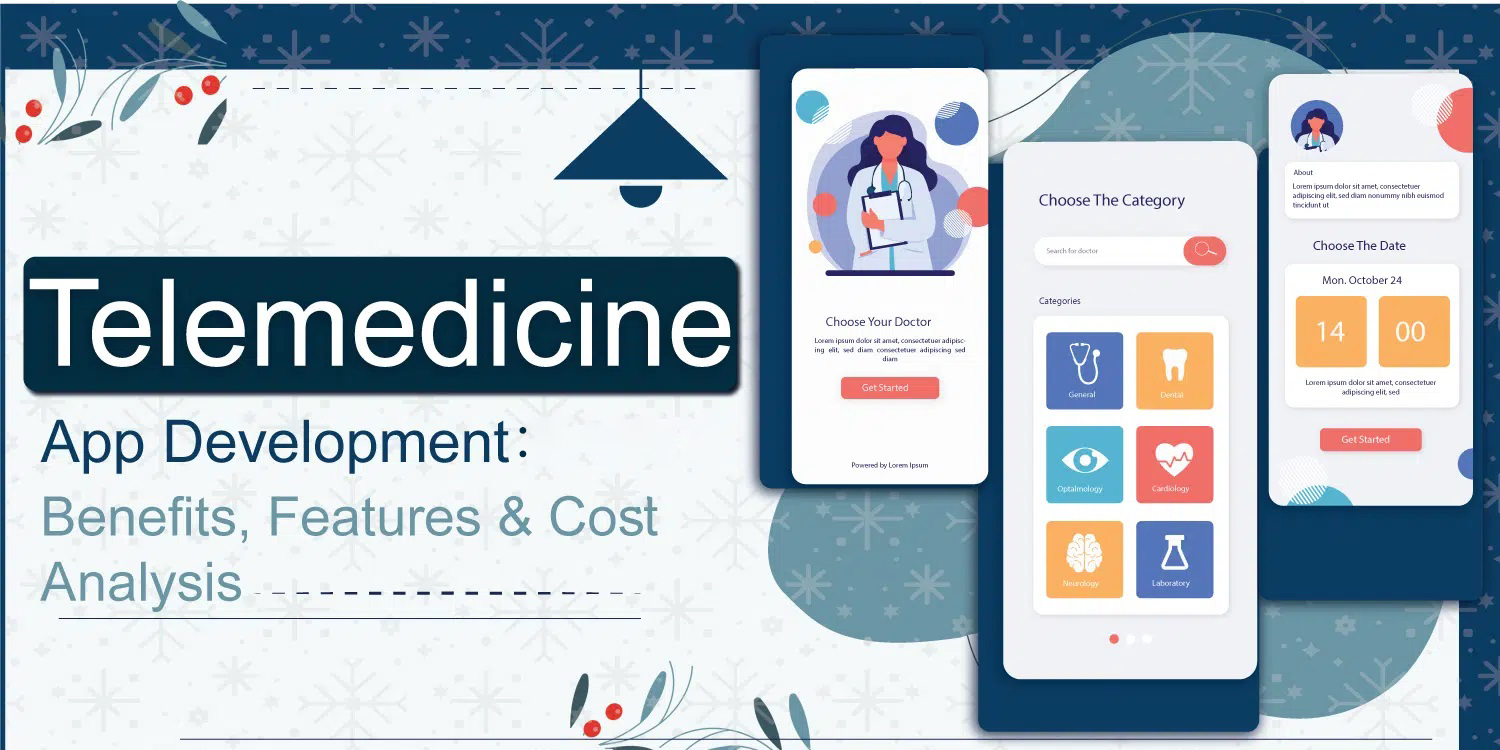If you’re developing healthcare software you must meet HIPAA audit trail and HIPAA audit log requirements. Otherwise, you will incur hefty fines and damage to your reputation. The good news is, that with some planning and the right tools, implementing HIPAA-compliant audit trails and audit logs isn’t too difficult.
In this guide, we’ll walk you through exactly what’s required to meet the HIPAA Security Rule’s audit trail and audit log specifications. We’ll explain the specific data elements that must be captured for each and recommendations for integrating them into your healthcare software development.
Table of Contents
ToggleWhy HIPAA Audit Trails and Audit Logs Are Critical?
In medical software development, Maintaining robust HIPAA audit trails and logs is key to compliance and protecting patient privacy. They give covered entities the ability to monitor how ePHI is being accessed and detect any inappropriate use.
During a HIPAA audit, audit trails and logs are scrutinized to ensure proper controls are in place. Failure to produce comprehensive audits of patient’s electronic medical records can result in penalties and fines.
Purpose of HIPAA Audit Trails and Logs
The purpose of HIPAA audit logs is to record and monitor access to electronic protected health information (ePHI). Audit trails and logs record who accessed or modified protected health information (PHI) and when.
- HIPAA Audit trails track actions like adding, deleting, or modifying PHI at a granular level. They log details like the user, date, time, and the actual change made.
- Audit logs provide a higher-level overview of access to electronic PHI. They record when users log in, and log out, which patient records were accessed, etc.
Regular reviews of audit trails can uncover unauthorized access or improper disclosure of patient data so corrective action can be taken. To meet HIPAA compliance solution requirements, your system should log key details like:
- The date and time of access
- The source of access (e.g. computer name, IP address)
- The identity of the person accessing the information
- The type of action performed (e.g. view, edit, delete)
How HIPAA Audit Logs help your institution
Audit logs are required under the HIPAA Security Rule to monitor system activity for suspicious behavior. When enabled and configured properly, HIPAA audit logs will:
- Record user login, logout, and access of electronic protected health information (ePHI).
- Capture details like username, timestamps, patient data accessed, etc.
- Alert administrators to potential security violations or unauthorized access so they can promptly investigate.
- Demonstrate your organization’s compliance with HIPAA regulations in the event of an audit.
To meet HIPAA audit log requirements:
- Enable audit logging on all systems and applications that access, store, or transmit ePHI. This includes Electronic Medical Records/EHRs, practice management systems, billing software, patient portals, etc.
- Configure audit logs to record essential details like user ID, date/time of access, files or records accessed, etc. The logs should be detailed enough to reconstruct user activity.
- Review audit logs regularly for signs of unauthorized access or suspicious behavior. Promptly investigate any anomalies.
- Retain audit logs for at least 6 years to comply with the HIPAA record retention rule.
HIPAA Audit Trail Requirements
To meet HIPAA audit trail requirements, your healthcare software needs to record and maintain detailed records of user activity. This means tracking things like:
- Who accessed or modified a patient’s electronic protected health information (ePHI)
- What information was accessed or modified
- When the access or modification occurred
These audit trails must be detailed enough to determine whether access was appropriate and in line with the user’s role. It’s not enough to just track that a user logged in—you need to capture details about what they did once logged in. The logs should record actions like:
- Viewing, creating, or modifying patient data like:
- Electronic medical records
- Billing information
- Insurance details
- Printing or downloading ePHI
- Deleting information
There are two main HIPAA trail requirements for monitoring systems and detecting security incidents:
1. Application Audit Trails:
- Track user activities: Logging actions like accessing PHI-connected data files, creating, reading, editing, and closing.
- Detect threats: Help identify potential risks and assess if user actions pose harm to files or the system.
2. System-Level Audit Trails:
- Monitor user access: Records logins, devices used, and login locations.
- Log login attempts: Tracks successful and unsuccessful logins, user IDs, timestamps, and attempted devices.
HIPAA Audit Log Requirements
HIPAA audit logs provide an essential layer of security and accountability for healthcare organizations. Following are the key requirements applying to HIPAA audit logs.
Audit Logs
Audit logs track users’ access and activity within a system. For a HIPAA compliance solution, audit logs must record who accessed what information, when, where, and how. They should capture:
- User ID
- Patient information accessed (e.g. name, medical record number)
- Date and time of access
- Firewall logs
- Anti-malware logs
- Source of access (e.g. IP address, device)
- Type of action (e.g. view, edit, delete)
Retention Period
Audit logs must be retained for at least 6 years from the date of creation. Some states require longer retention periods of up to 10 years. Check with your state laws to determine the appropriate retention period.
HIPAA Requirements for Cloud Providers:
Audit logs are vital for maintaining HIPAA-compliant rules when utilizing cloud solutions. Key Considerations for CSPs include:
Access Controls:
CSPs need to maintain audit logs for tracking ePHI access, including logins, logouts, and ePHI modifications.
Timestamps:
Audit logs must include accurate timestamps to establish an event timeline and aid in event reconstruction.
User Identification:
Audit logs should record unique user identifiers, associating actions with specific users to detect unauthorized access.
Integrity:
Audit logs must be tamper-proof to prevent unauthorized changes and ensure detectability of any tampering.
Retention and Availability:
CSPs must securely store audit logs for at least six years, ensuring accessibility for potential reviews.
Review and Analysis:
Regular audit log review helps covered entities and associates spot security incidents and unauthorized activities.
Common Elements in HIPAA Audit Logs
Overview: Understanding the essential components of HIPAA audit logs is crucial for effective implementation. The table below outlines key elements in HIPAA audit logs, providing valuable insights into user actions and PHI security.
| Element | Description |
| User Identification | Unique ID of the user/entity performing the action |
| Date and Time | Timestamp of the action |
| Action | Description of the specific action taken |
| Object | Target/resource accessed or modified |
| Outcome | Result/status of the action (success/failure) |
| Additional Details | Supplementary info like IP addresses or system identifiers |
| Audit Log ID | Unique ID for the audit log entry |
Utilizing these elements enhances HIPAA compliance solution and fortifies patient data security.
Non-compliance with HIPAA Audit Log Requirements
As with any compliance regulation, failing to meet HIPAA audit log requirements can result in hefty penalties. If your healthcare software does not properly record and maintain audit logs, you risk:
- Data breaches go undetected, compromising patient privacy and security.
- Difficulty investigating suspected security incidents without records of user access.
- Fines of up to $50,000 per violation for willful neglect of HIPAA rules.
There’s More!
- Loss of Trust: Violations harm reputation and trust, leading to customer loss and industry credibility.
- Regulatory Scrutiny: Noncompliance triggers audits, consuming resources and disrupting operations.
- Corrective Actions: Organizations may need to implement plans to rectify issues and prevent future breaches.
- Federal Program Exclusion: Noncompliance could lead to exclusion from federal healthcare programs, causing financial strain.
To avoid these consequences, your healthcare software must:
- Log All User Access: Record when users view, create, modify or delete electronic protected health information (ePHI).
- Maintain Logs for 6 Years: Older logs must be archived in a readable format even after being purged from active systems.
- Review Logs Regularly: Review audit logs and report any detected breaches within 60 days of discovery.
- Restrict Access to Logs: Logs contain sensitive data and must have limited availability on a need-to-know basis.
Further Consequences of Non-Compliance
If audits reveal your system does not meet these requirements, be prepared to update software, retrain staff and potentially pay penalties to resolve violations. Continued willful neglect can lead to criminal charges against responsible parties.
Also Read: Key Laws for Medical Software Development
How DreamSoft4u can help you follow HIPAA Audit Log Requirements?
With years of Healthcare IT experience, DreamSoft4u offers you a dedicated team to stay up-to-date with HIPAA regulations and compliance.
Customized audit logs
Configure audit logs to capture the specific types of events, users, objects, and actions that are relevant to your organization. The logs can be tailored for early attack detection and reliable forensics.
Easy report generation
Quickly generate reports from audit log data to demonstrate your compliance during a HIPAA audit. Our solutions make it easy to show auditors the required audit trail information.
Single-Tenant Cloud:
Dedicated instance for secure file transfers, storage, and access—no shared resources, or cross-cloud risks.
Advanced security
We employ strong security measures to protect audit logs and other PHI.: AES-256 encryption for data at rest, TLS 1.2+ for data in transit. Compliance with standards like HIPAA, PCI DSS, SOC 2, and GDPR.
Training and resources
As part of our corporate Operational Risk Management (ORM) program, We frequently provide HIPAA compliance solutions and software development security awareness training for our clients. We also share resources to help you understand requirements, risk areas, and the features built into the software for compliance.
Conclusion
So there you have it, the key things you need to know to make sure your healthcare software solution meets HIPAA audit trail and audit log requirements. It may seem like a lot of work. But, with the right planning and processes, it can be achieved.
We hope this blog will help you on your way to make your Software development security leakproof and protect patient data. And if the day comes when the auditors show up, you’ll be ready. If you have any questions, feel free to get in touch with our support team. We are always happy to answer all your queries.
FAQs
1. What are the technical requirements for HIPAA audit trails and logs?
While the blog outlines general elements, specifics vary. For a detailed assessment and solution, book a meeting and consult with one of our HIPAA experts.
2. How do I integrate HIPAA-compliant audit trails into my healthcare software development?
Approaches vary based on your environment. Use built-in logging or third-party solutions designed for HIPAA compliance. We offer custom HIPAA-compliant development and integration services for specific needs and goals.
3. Are there industry best practices for managing HIPAA audit trails?
Yes, establish clear policies, automate collection, and regularly review logs for anomalies.
4. What are the consequences of HIPAA non-compliance?
Non-compliance can not only lead to reputational damage but also attract legal implications. Plus, you may also be penalized and even face indefinite disruptions to operations.
5. How do I prepare my healthcare organization for a HIPAA audit?
It is imperative to conduct regular risk assessments and document compliance efforts. Moreover, you should also train staff, and develop a response plan for non-compliance.
If you need help, book a meeting with one of our experts who will guide you through the entire process and suggest the right solutions to automate the process for you.






















